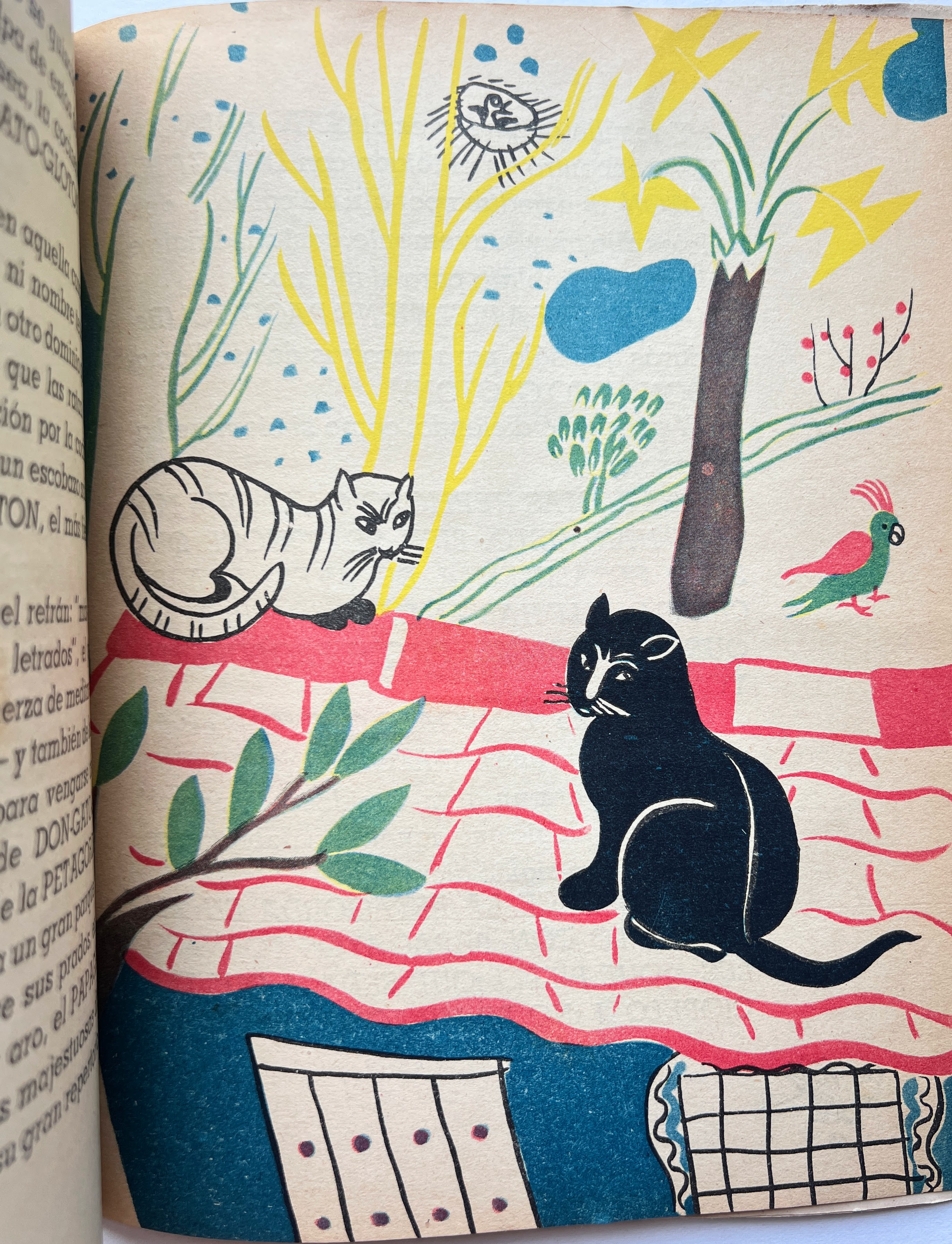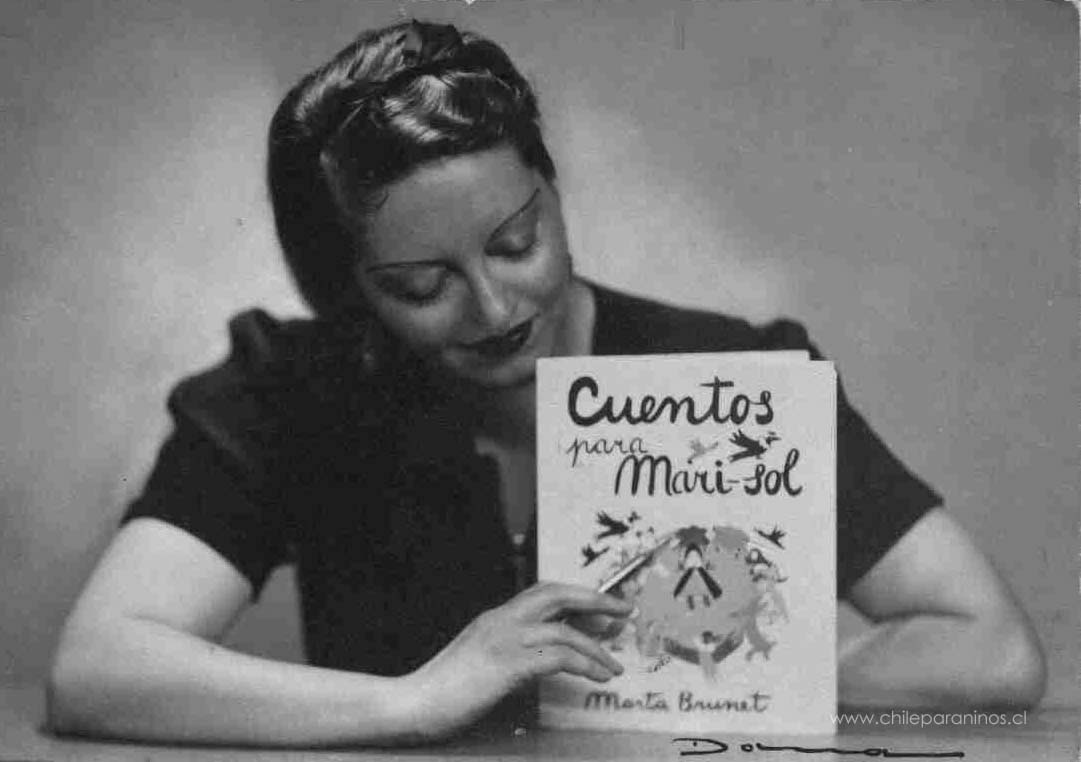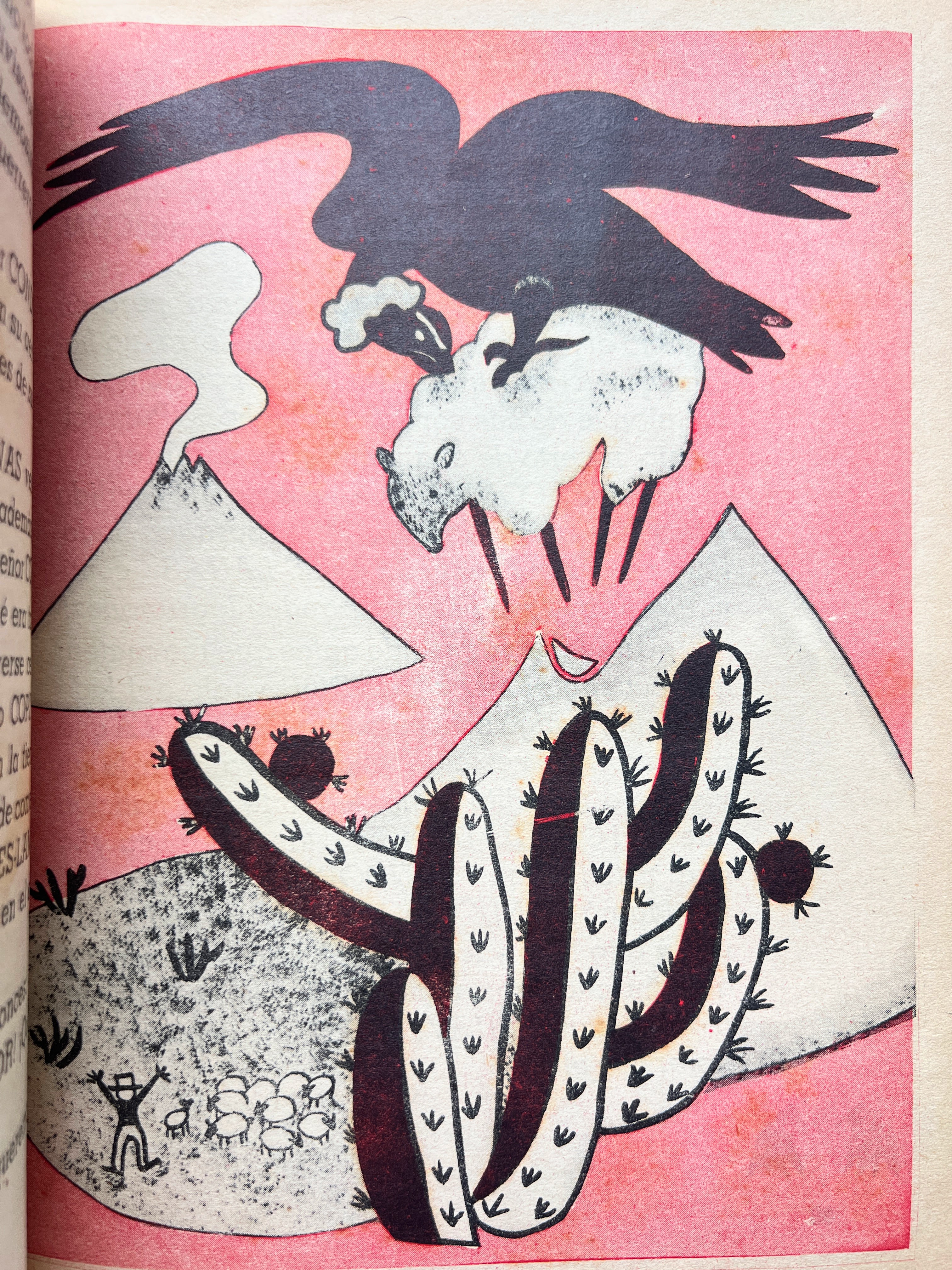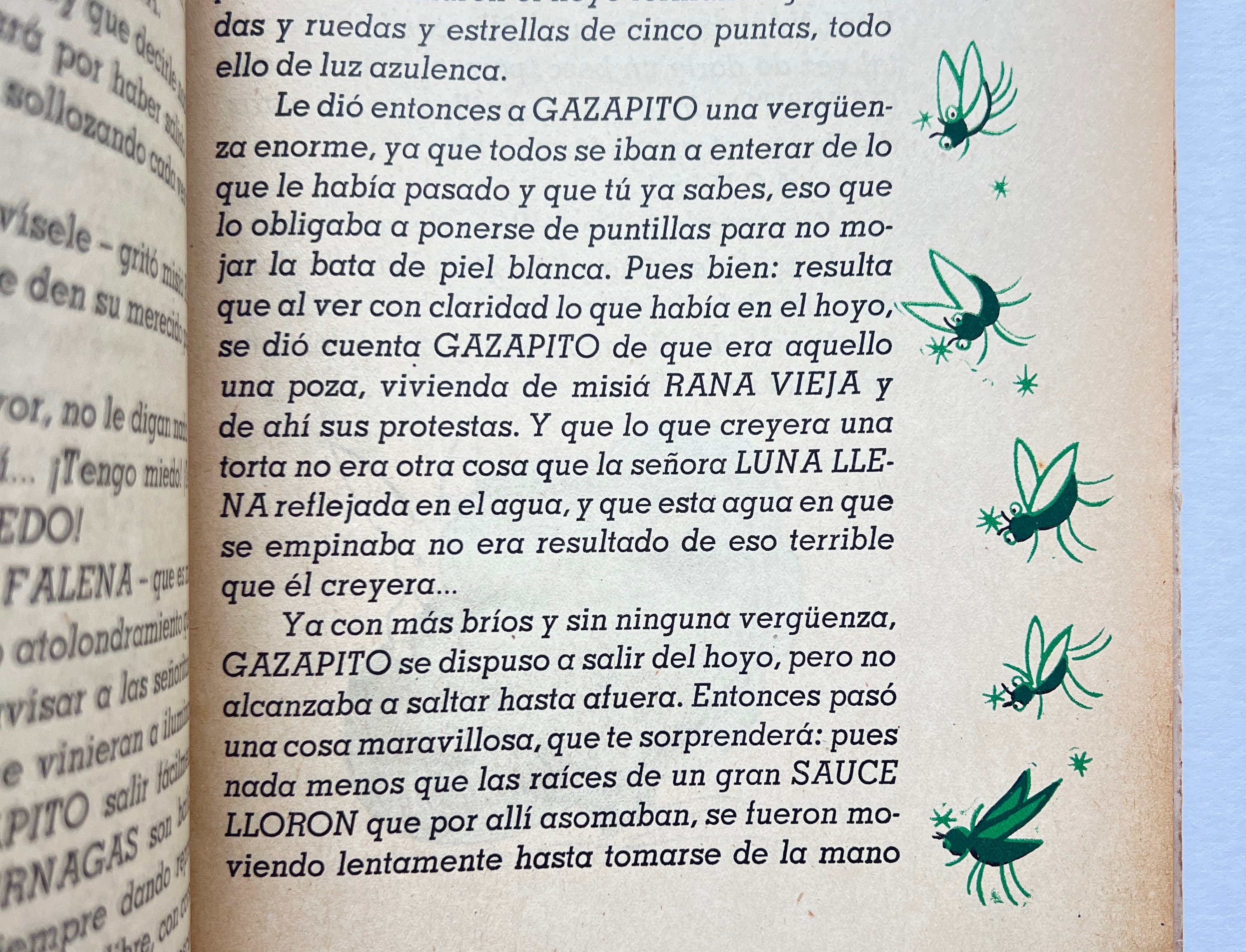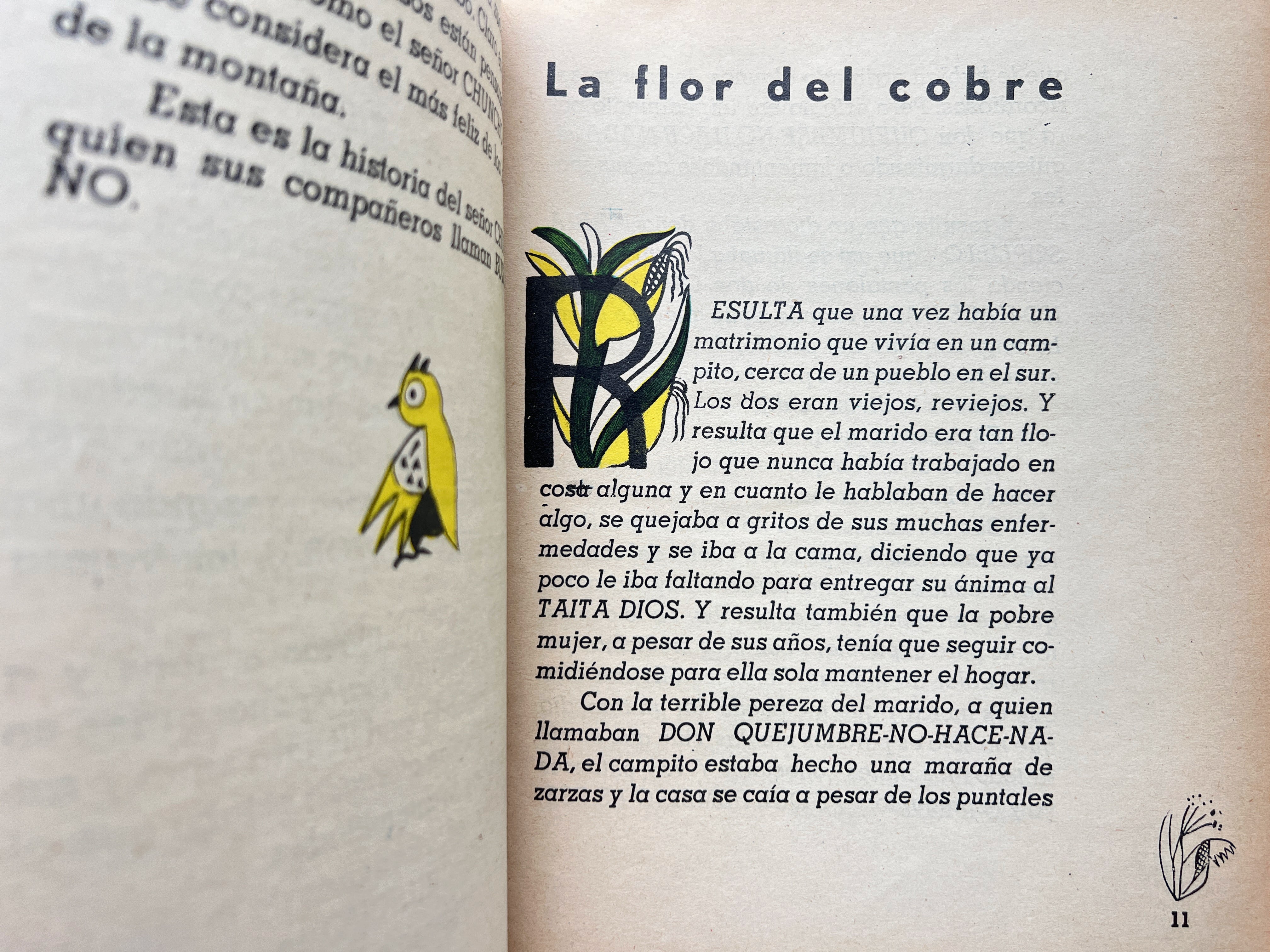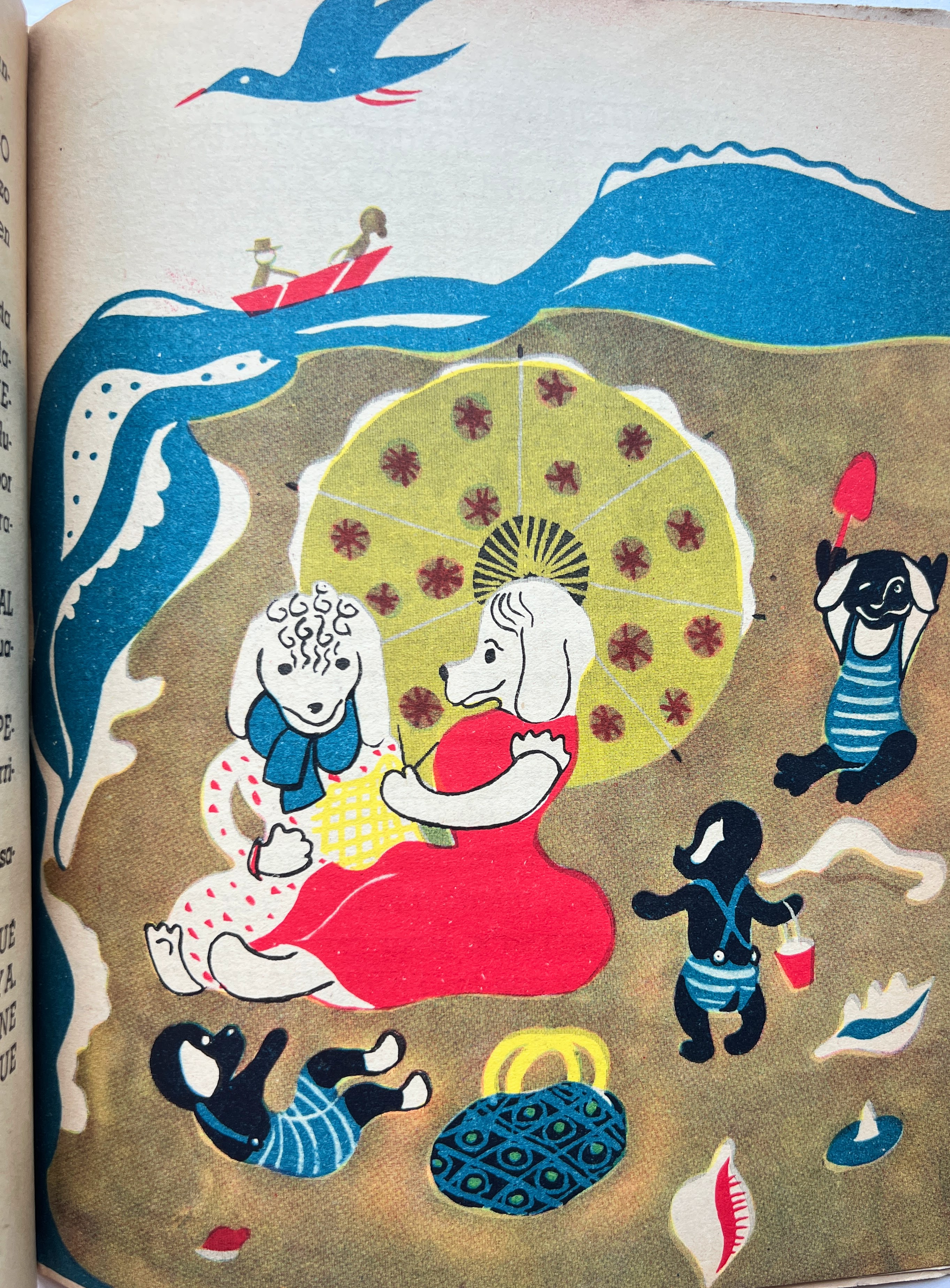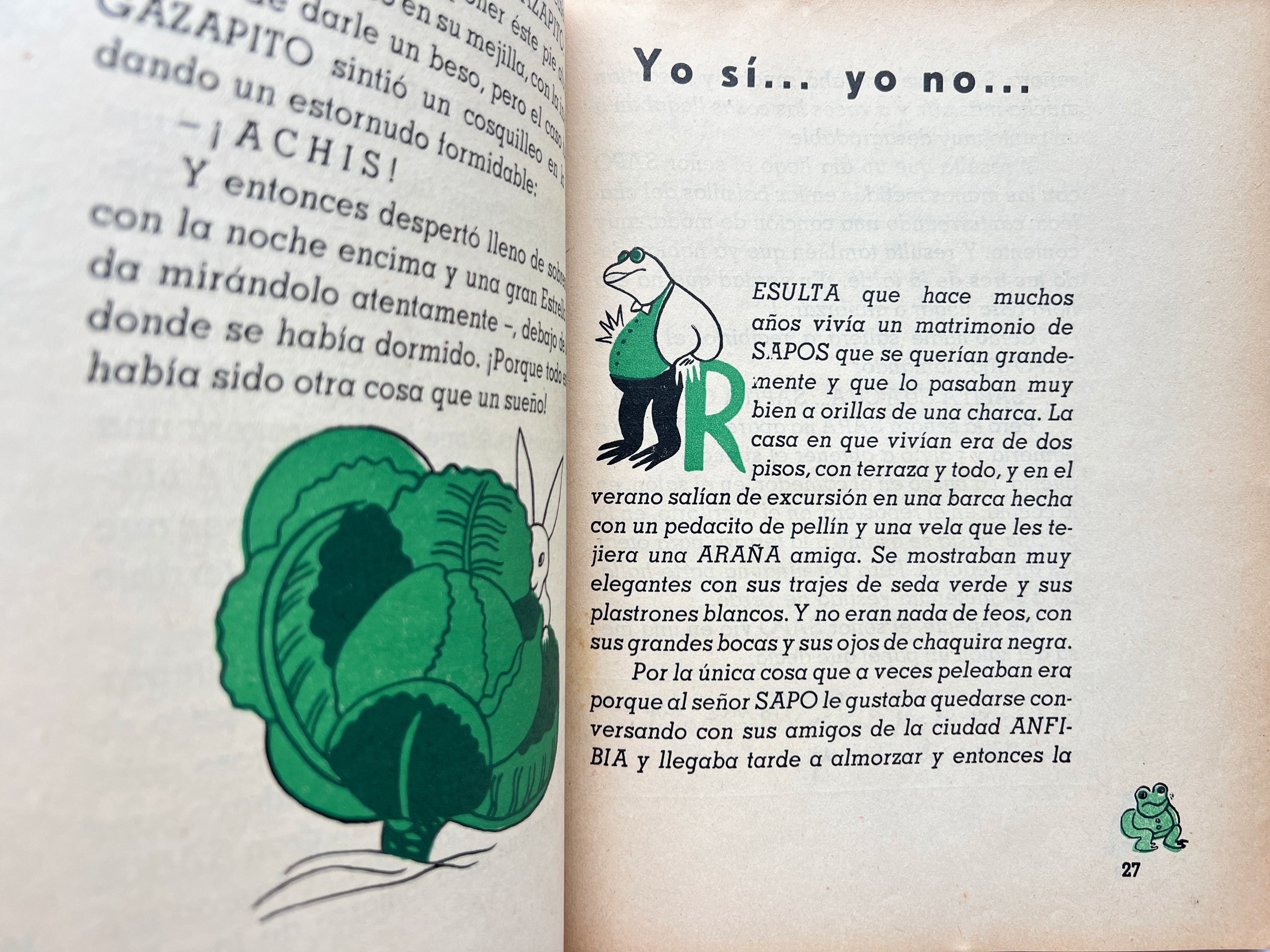GRAPH BOOKS: PRINTED MATTER FROM RADICAL ART AND SOCIAL MOVEMENTS.
FEMINIST HISTORIANS OF MATERIAL CULTURE.
Cuentos para Mari-Sol
Marta Brunet and Maria Valencia, Illus., 1938?
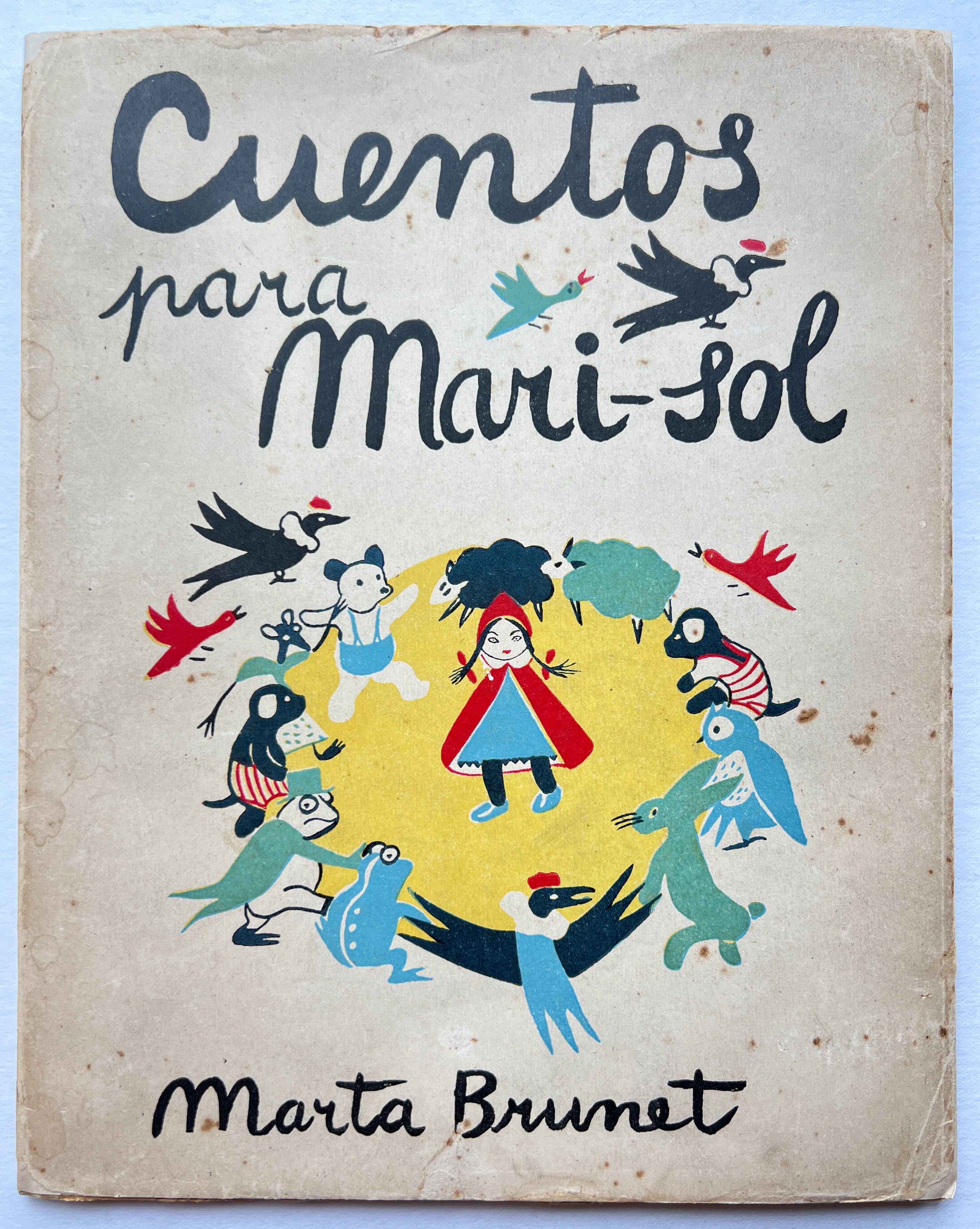
Brunet, Marta. Maria Valencia, Illus. Cuentos para Mari-Sol. Santiago de Chile: Zig Zag, nd. (1938?). First edition. 25.2 cm, 49, [1], pp.; letterpress? with four-color halftone title page and five four-color halftone plates, additional in-text color halftone illus. throughout; each of the seven stories beginning with a historiated initial “R” (“Resulta que…”); the page numbers with changing ornamental surrounds corresponding to the different stories. Text block clean and uniformly toned, colors bright with some ghosting/bleedthrough from the inking of the color illustrations. Orig. stapled card stock boards, rebacked, with orig. color illustrated wrapper, stained and reinforced at edges and spine where there were small losses, Brunet/Valencia “ex-libris” design on the rear wrapper.
First edition of the beloved mid-century Chilean children’s book, Cuentos para Mari-Sol. Authored by the award-winning novelist Marta Brunet (1897-1967) and the only edition with exuberant color illustrations by Maria Valencia, one of four participants in the groundbreaking neocubist Exposición de Diciembre (often described as the first abstract art exhibition in Chile). Known from a single other copy, at the Biblioteca Nacional de Chile (BNC), the first edition seems to have been rarely consulted by most Brunet bibliographers, who do not fully differentiate it from all subsequent editions. One of the seven stories appearing in the first edition is missing from all others, and the second edition, published approximately 25-30 years later, was much enlarged, including an additional thirteen stories (Los Cuentos de Mama Tolita) written many years after the original Cuentos para Mari-Sol.
Brunet was a feminist novelist, one of the earliest Latin American women writers who were not “simply displaying the ways in which women have been subordinated and excluded from the conventional social contract” but actually imagining “alternative social arrangements not based on fixed gender identities or conventional gender roles.” She was deeply involved in the Chilean suffrage movement, and her writing “violated in particular the limits of a rigidly class-based society, attacking ‘good customs’ (...) The demand for boldness in the behavior of women linked to the rise of the suffrage movement included above all the use of language.”
Both Brunet and Valencia had traveled to Europe in the 1910s and 1920s and were known for their participation in avant-garde intellectual circles there and in Chile, Argentina, and Venezuela. In addition to their involvement in the suffrage movement, they were also involved in Chilenidad and Americanismo, which prioritized local and indigenous references and expressions. Gabriela Mistral wrote of Brunet: “se ha amamantado de chilenidad. Chilenidad de paisaje, de acento, de costumbre, de carácter.” Cuentos de Mari-Sol is an example of Brunet’s early, rural chilenidad: familiar tropes of children’s folktales placed in a Chilean context (e.g. a protagonist condor; and the landscapes of Chile, rather than Europe). After Mistral, Brunet was the second woman to receive the National Prize for Literature, in 1961.
We offer the approximate date of 1938 for this edition because Valencia’s distinctive cover image is visible in a famous photograph taken of Brunet in that year (photograph in the collection of the BNC). Various bibliographies offer different dates, ranging from 1934 in Marting’s Spanish American Women Writers: A Bio-Bibliographic Source Book, to 1941 by the BNC.
SOLD
Works cited:
Mistral, Gabriela. “Sobre Marta Brunet.” El Mercurio. July 8, 1929.
Oyarzún, Kemy. “Género y canon: la escritura de Marta Brunet.” Revista de la facultad de filosofía y humanidades, Universidad de Chile. No. 14. 2000.
Pignatello Regenstreif, Ellen G. Power, sexuality and the new social contract: Five twentieth century Latin American novels. Diss., Stanford University, 1994.
